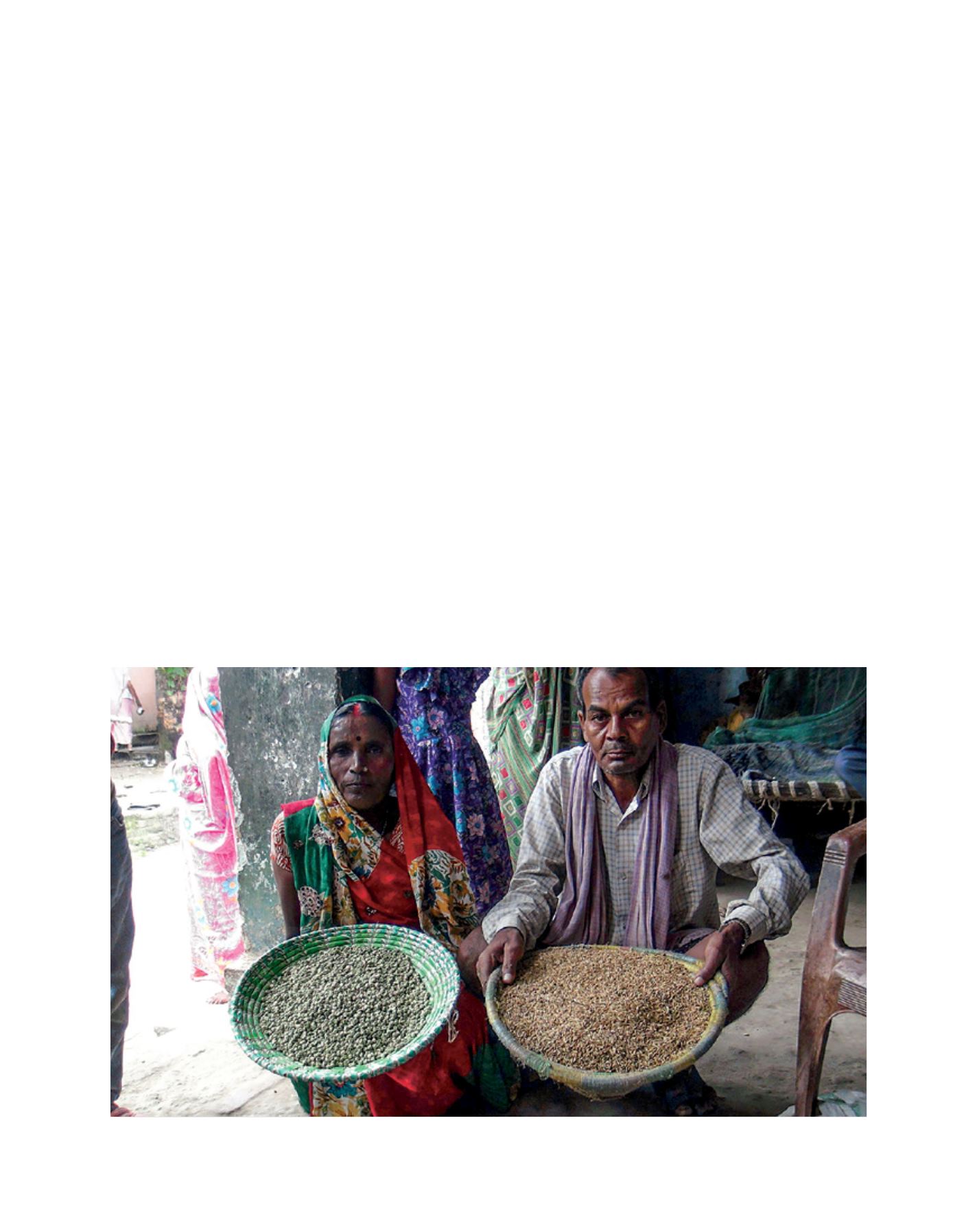

[
] 169
Abha Singh, a gender specialist who worked under the
mentoring wing of Dr Thelma Paris of the International
Rice Research Institute (IRRI), commented that, as more
men migrate from rural areas to the cities to look for
“greener pastures,” women then take on the farming activi-
ties that the men leave behind. Studies show that women,
especially those from the lower caste, contribute 60-80 per
cent of the labour required in rice farming, including post-
harvest activities.
According to Dr Paris, migration of men farmers and
farm labourers from rural areas to cities is a trend that will
continue in the near future. As a result, more women are
left behind to manage their farms and households, and care
for their young family members and the elderly. This trans-
formation in agriculture has changed the potential roles of
women farmers. They are now taking the reins in leading a
farming household.
Knowing the crucial role of women and the amount of their
contribution in rice farming, IRRI has been working closely
with its national agricultural research and extension system
partners in order to assist women farmers in getting access to
technologies they need. In fact, it has been a standard operat-
ing procedure of IRRI to invite more women farmers (at least
30 per cent are women) into participatory varietal selections in
stress-prone rice areas or areas that are prone to climate-related
problems such as floods, drought and salinity. They are given
access to seeds of climate-smart rice through self-help groups.
Self-help groups are organized by women or men as village-
based financial intermediary committees mostly with 10-20
members for on- and off-farm income-generating activities.
Smallholder farming families in developing countries,
especially in rain-fed areas, are the most vulnerable to
climate change. In eastern Uttar Pradesh, where rice produc-
tion is predominantly rain-fed, growing rice is so risky that
farming families take a gamble every cropping season and
can only hope for the best. They have no choice but to place
their bet. When luck is on their side, during a year with
ample rainfall, the farmers are blessed with enough food
to sustain their families till the next cropping season. But
when drought strikes, the price of crop failure is losing all
their investments – labour, seed and inputs – and long, lean,
hungry months ahead.
“The eastern part of India was considered a ‘hunger belt’
before IRRI started working on the dissemination of stress-
tolerant rice varieties in 2008 through the Stress-Tolerant
Rice for Africa and South Asia (STRASA) project,” said
Umesh Singh, STRASA’s regional coordinator. “The project
aims to develop rice varieties that can withstand flood,
drought and salinity, among other stresses brought about
by climate change.”
STRASA researchers evaluate these varieties, including
participatory varietal selection involving farmers. Gender
is integrated into most activities under STRASA and the
Global Rice Science Partnership, the Consultative Group
on International Agricultural Research programme on rice,
which aim to give women farmers input into the selection of
improved rice varieties that are approved for release.
Women farmers such as Mrs Devi and her family are
benefiting greatly from STRASA. Her concrete house has
sturdy concrete posts; its blue paint is faded just slightly,
Sahbhagi dhan is a short-duration crop, enabling farmers to plant three crops in a year including vegetables such as peas and onions as well as rice
Image: IRRI
D
eep
R
oots
















